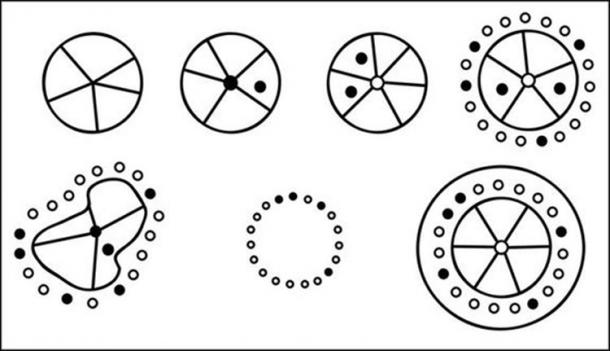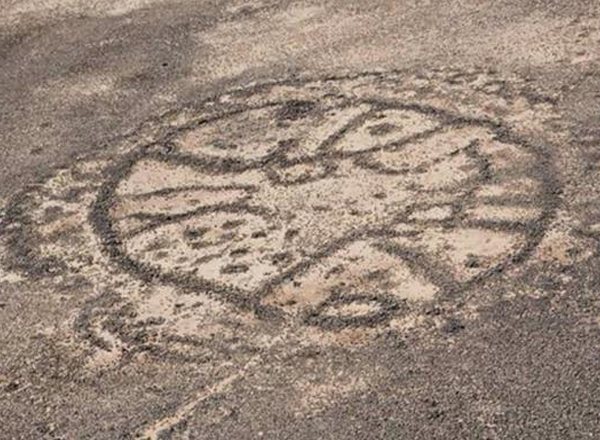
Puma Punku - high in the Andes - Bolivia
Slide Show
Puma Punku in Bolivia is one of the world’s most mysterious ancient sites. This remains true for both academic archaeologists and historians as well as rogue historians who investigate the hypothesis of advanced prehistoric civilizations or ancient assistance from extraterrestrials.
Puma Punku covers a large part of the massive ancient city of Tiwanaku and it is located just southeast of Lake Titicaca in the Andes. The city predates Inca presence in that part of South America.
The mystery lies in the precision and complexity of the structures that pervade the ruin. The finely cut doorways and remaining stone blocks bear no chisel marks and many interlock with very fine precision.
The exact origin and age of the site is disputed.
According to radiocarbon dating results released by anthropology professor William H. Isbell of the University of Illinois, the site was constructed between approximately 500 and 600 A.D. Others, however, say the radiocarbon dating is inaccurate and the structure may have been built many thousands of years before that.
Gobekli Tepe - Turkey - 11,000 years old
Slide Show
Six miles from Urfa, an ancient city in southeastern Turkey, Klaus Schmidt has made one of the most startling archaeological discoveries of our time: massive carved stones about 11,000 years old, crafted and arranged by prehistoric people who had not yet developed metal tools or even pottery.
The megaliths predate Stonehenge by some 6,000 years. The place is called Gobekli Tepe, and Schmidt, a German archaeologist who has been working here more than a decade, is convinced it’s the site of the world’s oldest temple.
Beyond, on the hillside, are four other rings of partially excavated pillars. Each ring has a roughly similar layout: in the center are two large stone T-shaped pillars encircled by slightly smaller stones facing inward. The tallest pillars tower 16 feet
Dwarka - India - The Home of Lord Krishna
Marine scientists say archaeological remains discovered 36 metres (120 feet) underwater in the Gulf of Cambay off the western coast of India could be over 9,000 years old.
The vast city - which is five miles long and two miles wide - is believed to predate the oldest known remains in the subcontinent by more than 5,000 years.
The site was discovered by chance last year by oceanographers from India's National Institute of Ocean Technology conducting a survey of pollution.
Using sidescan sonar - which sends a beam of sound waves down to the bottom of the ocean they identified huge geometrical structures at a depth of 120ft.
Debris recovered from the site - including construction material, pottery, sections of walls, beads, sculpture and human bones and teeth has been carbon dated and found to be nearly 9,500 years old.
Some believe the rocks naturally formed on the site, before being modified at some point by humans.
According to ancient Hindu texts Dwarka was attacked with a flying machine Vimana. It is the description of the battle that draws the attention of the ancient aliens theorists, as it seems to suggest it was fought with sophisticated technology and advanced weapons, potentially even with a craft attacking from the orbit. The space craft commenced an attack on the city with the use of energy weapons, which to the on-lookers resembled a discharge of a lightning, and it was so devastating that after the attack most of the city lay in ruins.
Lord Krishna counterattacked and fired his weapons on the ship. They looked like arrows yet they roared like a thunder and shone like rays of the Sun when released
Yonaguni Monument - Submerged East of Japan
WHEN divers went looking for hammerhead sharks in the Pacific Ocean they never expected to stumble across these incredible underwater ruins.
All manner of theories have been used to try and explain how the massive slabs got there, from them forming naturally to being man-made or even put there by aliens.
A mixture of sandstone and mudstone makes up the mysterious Yonaguni Monument, which is 490ft by 130ft and around 90ft high.
The location, sometimes described as Japan’s Atlantis, lies in the Pacific Ocean… but no one quite knows how the wreckage got there.
Since the site was uncovered in 1987, scholars have argued about how the ruins were created.
Boston University geologist Robert Schoch is one of the researchers that agrees with this theory.
He noted that the layers of the monument are well-defined and were likely to have formed as a result of Yonaguni lying in an earthquake-prone region.
Schoch argues: “The rocks of this group are also crisscrossed by numerous sets of parallel, vertically oriented joints in the rock.
“These joints are natural, parallel fractures by which the rectangular formations seen in the monument likely formed.
“Yonaguni lies in an earthquake-prone region; such earthquakes tend to fracture the rocks in a regular manner."
Despite the extensive research, others have suggested the structure is artificial.
Theorists claim the parallel faces, sharp edges and holes by the triangle pool all suggest they are ruins of a former human civilisation.
Professor Masaaki Kimura, from the University of the Ryukyu, believes the remains date back to 8,000 BC.
He believes that tectonic activity led a former community to become submerged underwater over time.
Aiud Wedge
- It was discovered by workers while digging a trench along the Mures river in Romania in 1974.
- It was found next to mastodon (distantly related to Elephants) bones
. - researchers who have had the time and opportunity to examine the object believe it is not a natural formation.
- Aluminium production requires enormous amount of heat, 1,000 degrees actually.
- Two separate laboratories tested the artifact but both laboratories received almost identical results. The object was tested in the Archaeological Institute of Cluj-Napoca, n Lausanne, Switzerland.
- It is composed 89 percent out of aluminium but also has traces of copper, zinc, lead, cadmium, nickel and smaller traces of other elements.
- Aluminium isn’t found freely in nature thus must be manufactured, but it has not been produced until the 1800’s.
- Even though its exact age is perhaps a debate among scholars, if the aluminium wedge was the same age as the mastodon bones it would make this mysterious piece at least 11,000 years old.
- Geological evidence places the Aluminium Wedge to be at least 10,000 years old.
- The oxidized layer coating has shown that the artifact is more likely to be around 400 years old, still placing way before aluminum was produced. The dating technique utilized to obtain the artifacts age was not released.
- The Aluminium wedge was stored in a museum up until 1995.
- Pseudoarchaeologists and Ufologists believed that this finding is evidence of extraterrestrial beings visiting Earth in the past.
- Floring Gheorgita a known Romanian ufologists believes that this item is actually a landing gear of an alien spacecraft.
- According to research the exact composition of the artifact is as follows: aluminum (89%) Copper (6,2%), silicon (2,84%), zinc (1,81%), lead (0,41%), tin (0,33%), zirconium(0,2%), cadmium (0,11%), nickel (0,0024%), cobalt (0,0023%), bismuth (0,0003%), silver (0,0002%), and gallium (in trace amounts).
- Even though there has been interest surrounding the Aluminium Wedge, some scholars believe that this item is just another… fake.
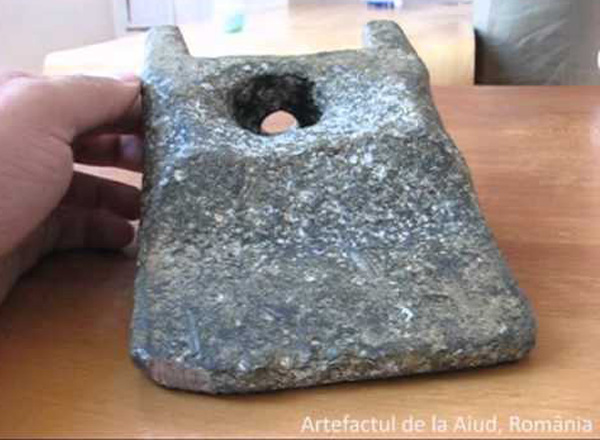
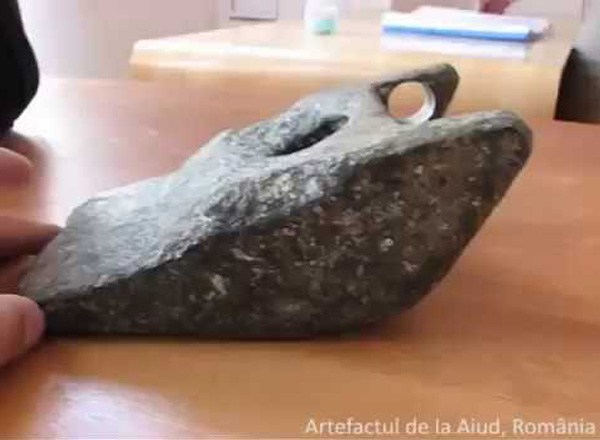
Antikythera Mechanism - World's First Computer
After 2,000 years under the sea, three flat, misshapen pieces of bronze at the National Archaeological Museum in Athens are all shades of green, from emerald to forest. From a distance, they look like rocks with patches of mold.
Get closer, though, and the sight is stunning. Crammed inside, obscured by corrosion, are traces of technology that appear utterly modern: gears with neat triangular teeth (just like the inside of a clock) and a ring divided into degrees (like the protractor you used in school). Nothing else like this has ever been discovered from antiquity. Nothing as sophisticated, or even close, appears again for more than a thousand years.
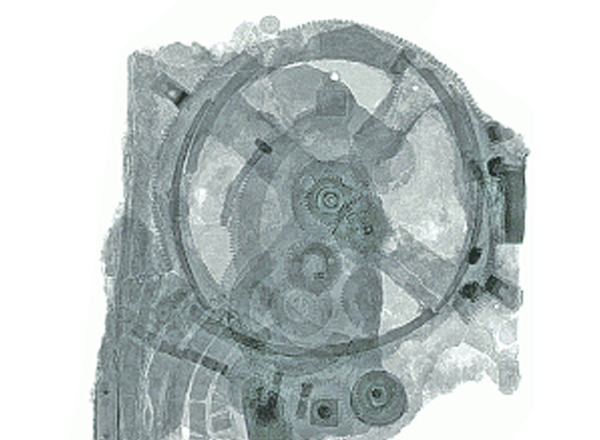
No more of these have ever been found...this is a true one of a kind.
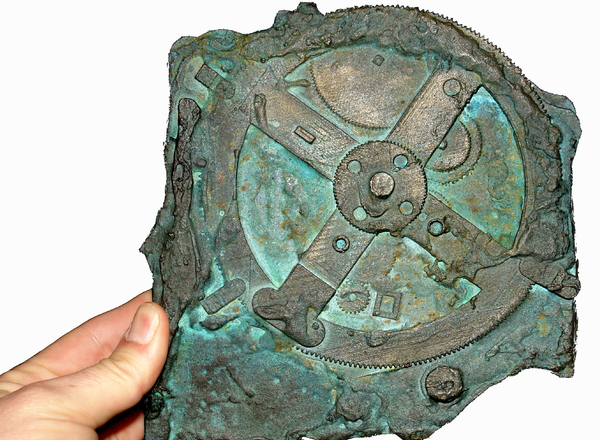
Eye of the Sahara
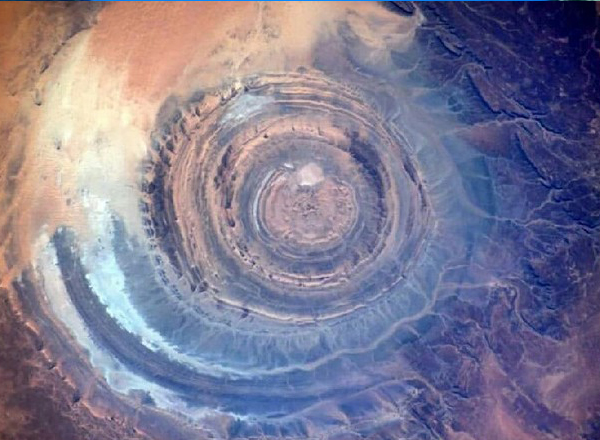
- 26 miles in diameter
- central mound surrounded by concentric circles of heavily eroded stones
- only discovered after satellite photos.
- Known as Richat Structure
- exact cause disputed..some say meteor strike, others say magma dome and more, but no definitive explanation yet.
So...since it's still in dispute, sometimes it can be fun to speculate.
I closely resembles Plato's description of Atlantis.

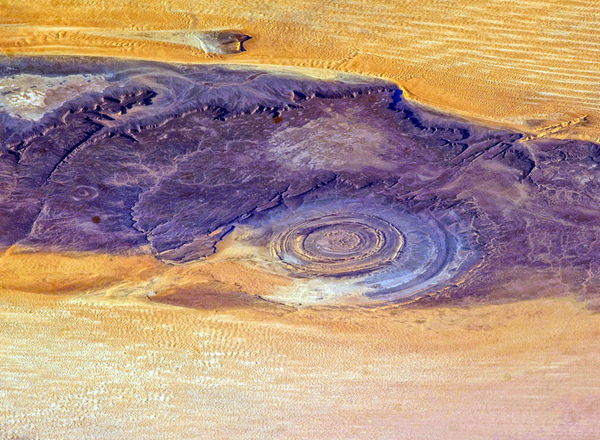
Nazca Lines
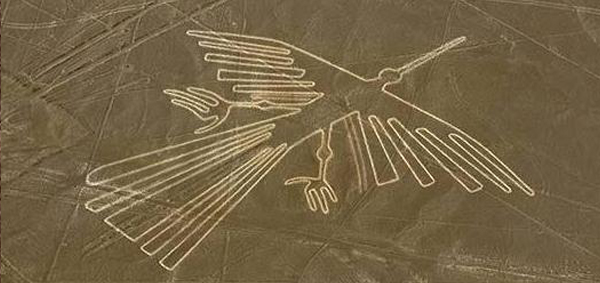
Famous lines and shapes carved into the ground in Peru and viewed only from above...some a mile long.
There are outlines of birds, dogs, monkeys, etc. etc. As well as acarving of a large man waving to the sky.
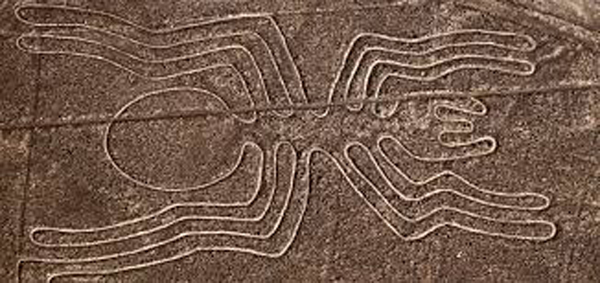
Nobody knows who carved these or how old, but they're carved into a flat plain where it seems to suggest the top of the mountain had been completely removed
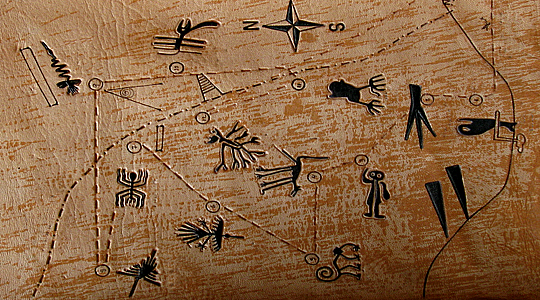
Middle East "Wheels"
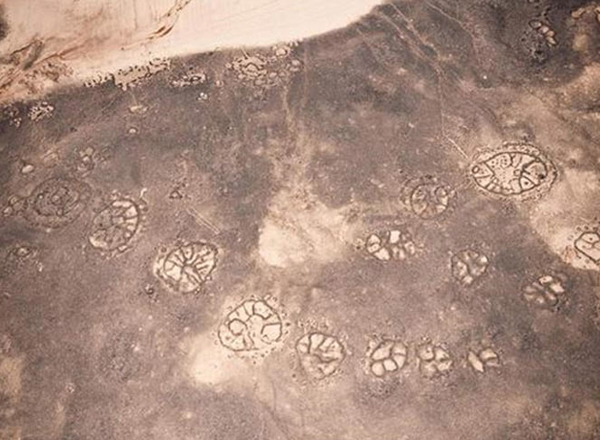
Thousands of these are all over the landscape in the middle East and Egypt. What they are, and what they were used for is a complete mystery, but they are at least as old as the old Summerian Empire. From 8 feet diameter to 30 feet diameter in size.
